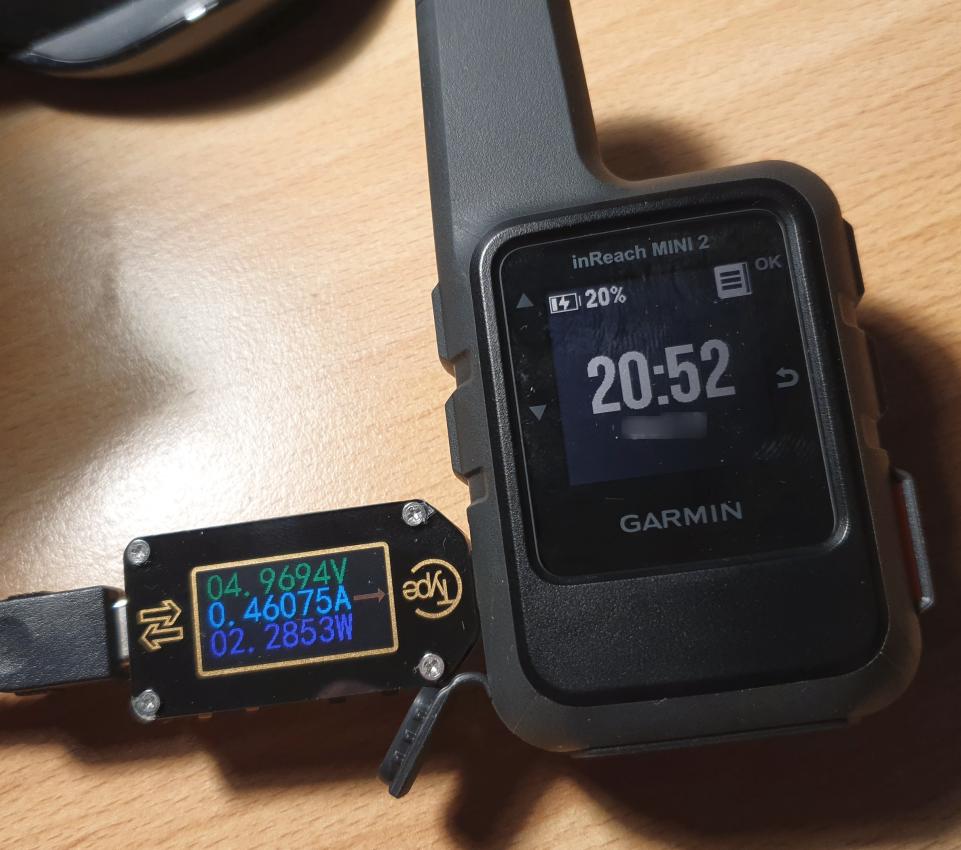
When all else fails, my Garmin InReach Mini 2 would be the last device standing. The question then is how long I could use it before its battery runs out. On their web page, Garmin says the device has a standby time of up to 30 days (720 hours). But that’s the best case with full view of the sky and the complete horizon. In my urban valley scenario, that’s unlikely to happen. So what kind of endurance can I expect in such an environment?
Power Consumption with Average Sky and Horizon Visibility
When in deep sleep, the device is very power efficient and hardly draws any power at all. However, while powered-on, the Mini 2 will check for waiting messages once an hour. And when that happens, a satellite better be available. That’s because it’s draws quite some power from the battery to look for satellites and even more power is required to communicate with it. In my 6th floor window scenario described in a previous post, where the Mini 2 is behind a window and the sky and horizon are partly visible, the battery indication looses 1% every 4 hours. That’s 6% per day, which will make the battery last around 16 days. The 30 days given by Garmin is with total visibility of the sky. So the numbers make sense.
Writing messages draws additional energy, because the device will stay active for 10 minutes to check for incoming replies. It will only go to deep sleep again and resume its 60 minutes cycle after that time. In other words, the standby time will further decrease, depending on how many messages are written.
Indoor without Satellite Coverage
So far, the numbers are quite good. However, when the device is taken indoors or otherwise can’t see a satellite, it keeps looking which significantly impacts battery life. Here’s an example: In the morning, I started with 74% of battery life remaining. During the day, the device was mostly indoors with no satellite coverage. At the end of the afternoon, the battery was down to 22%. In other words: One day indoors without satellite coverage and the battery is empty. That means that the device should be switched-off when not outside or when it can’t be put at a location where it can talk to a satellite once an hour.
Charging Time
The Mini 2 comes with a modern USB-C port but only charges with USB-2 speeds, i.e. with 2.5 watts. The battery capacity is 1200 mAh / 6 Wh, so it takes at least 2.5 hours to fully charge the device. That’s a bit long for my taste but still acceptable.
Transmit Power
And while we are talking about power consumption, here’s another interesting data point: The documentation says that transmit power in the 1.6 GHz band, which is were the Iridium satellites transmit and receive, is 31.8 dBm, which is 1.5 watts. Just think about that for a minute. In the best but unlikely case, a satellite is right overhead but still 780 km away. In the average case, the satellite is somewhere further down near the horizon and over a thousand kilometers away. And yet, 1.5W of power is enough to send a message from a small handheld device with a small antenna to a satellite that far way! I find that absolutely incredible. More about this in the next post in this series.